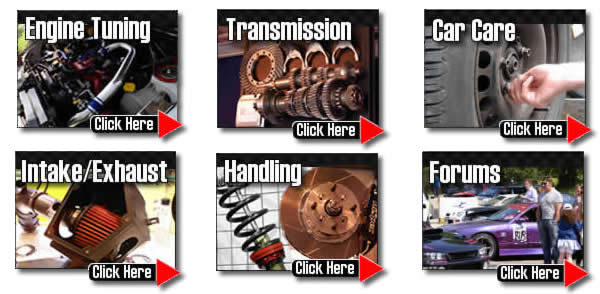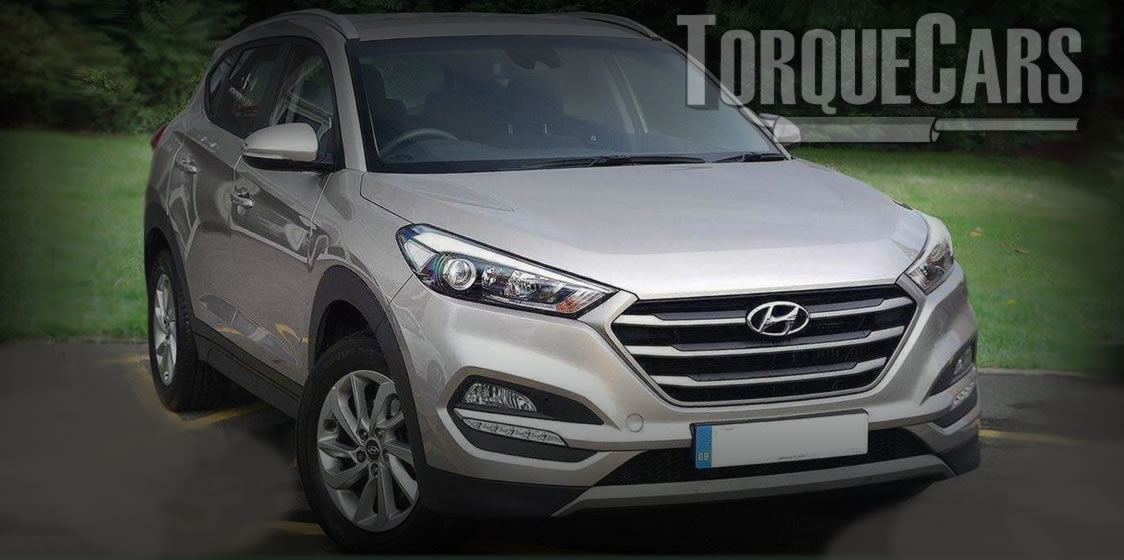Tuning the Hyundai Tucson
"Thanks for reading this Hyundai Tucson tuning tips."
The Tucson is a brilliant car modification project to execute. We see loads of people wasting money on their Tucson doing the wrong mods and then having to start over. Follow our articles to avoid making the common mistakes
We look into Tucson tuning and point out the ultimate upgrades. Hyundai Tucsons offer good returns when tuned and with the right mods you can greatly enhance your driving pleasure.

Handling/Suspension upgrades
Many Tucson owners uprate the handling of their cars with tuning suspension modifications as a priority, this will certainly increase your enjoyment of the car.
We found that most Tucson factory suspension setups need tweaking, a few degrees of toe out for cornering or toe in for stability, 1-1.7, and some negative camber will radically benefit your cornering and handling.
We suggest that you fit motorsport suspension and lower the car by 21mm - 37 mm. Larger drops require arch work - especially on models already equipped with uprated suspension.
Don't just look at the peak power figures, you need to see the whole torque curve when determining if a mod is right for you Tucson.
The best power gains come from larger engine sizes. The more you start with the bigger the return on investment so engine swaps are good value mods for small engined cars.
Tuning modifications.
These mods performance mods are usually fitted by our members, decide how far you want to go before you get started.

Getting the right motorsport upgrades for your planned usage of the car is a time and money saver. Stage 3 motor sport mods just don't work well on the road making the car difficult to drive.
First generation (2004–2009) engines
- 2.0 L Beta II G4GF I4 (petrol)
- 2.0 L"Beta II G4GC"i4 (petrol)
- 2.7 L Delta G6BA V6 (petrol)
- 2.0 L R-Line D4EA CRDi Inline 4 (diesel)
Second generation (2009–2015) engines
- 1.6 L Gamma G4FD GDI Inline 4 (petrol)
- 2.0 L Theta II G4KD MPi Inline 4 (petrol)
- 2.0 L Nu MPi Inline 4 (petrol)
- 2.4 L Theta II Inline 4 (petrol)
- 1.7 L U-Line D4FD CRDi Inline 4 (diesel)
- 2.0 L R-Line D4HA CRDi Inline 4 (diesel)
Third generation (2015–present) engines
- 1.6 L Gamma G4FD GDi Inline 4 (petrol)
- 2.0 L Theta II G4KD MPi Inline 4 (petrol)
- 2.0 L Nu Inline 4 (petrol)
- 2.4 L Theta II Inline 4 (petrol)
- 1.7 L U-Line D4FD CRDi Inline 4 (diesel)(pre facelift)
- 1.6L U-Line D4FD CRDi Inline 4 (diesel)(facelift)
- 2.0 L R-Line D4HA CRDi Inline 4 (diesel)
Please watch our introduction Video tutorial to car tuning. Be sure to subscribe and support our new channel.
How to tune your car
- Improve the handling
Focus on Suspension improvements, such as coilovers and make sure the bushings are in good order and that the alignment is correct. Then focus on improving the brakes, with a big disk brake conversion kit and fast road brake pads.
- Remove restrictions
Focus on the intake and exhaust with filters being the common point of restriction in a tuned car. Intercoolers may also become restrictive on turbo engines so this may also need to be uprated.
- Burn more fuel & air
Increase the fuelling so it matches the air coming into the engine. The ratio is important so you need to improve the fuel pump and injectors, so the head mods, big valve conversions, fast road camshafts and forced induction upgrades extra supply of air is adequately met.
- Test and replace any weak parts
Weak areas are commonly the clutch, the turbocharger and pistons and crankshaft in a highly tuned engine. Makes sure these components will cope with your power aspirations.
- The Tune or Remap
A cars ECU controls the fuel, timing, spark and even the turbo in some cases, so to fully extract your gains you should remap the car last and this will fully release the power. Some cars are easy to map, and others require piggyback ECU's or aftermarket ECU's but this is the most vital step of your tuning project.
Modifying to Stage 1:
Lighter flywheel, Suspension upgrade (drop 21mm - 37 mm.), Sports exhaust, Panel air filter, Remap, Alloy wheels.
Modifying to Stage 2:
Fast road cam, high flow fuel injector, Power/Sport clutch, Ported and polished head, fuel pump upgrades.
Modifying to Stage 3:
Adding or upgrading forced induction (turbo/supercharger), Competition cam, Sports gearbox, Internal engine upgrades (pistons/head/valves), Engine balancing.
You really need to keep as much low end torque as possible and aim to achieve a long power band across the rev range rather than a narrow top end power hike.
The whole aim of our articles is to give a limited introduction of modifying performance parts and point you in the right direction, our forum is best place to go if you need more detailed advice and tips on your modified car project, the best uprated parts and all aspects of modding cars.A fast road cam will be one of the best NASP power modifications you can do with a single part fitted to your engine.
It improves the intake and exhaust durations and increases the power if done right. Ideally you'd add other mods and finish up with a reflashed ECU. We'd also caution you not to go with a motor sports profile cam as this affects the engines idling and general town driving characteristics.
You will need to ensure that the engine is not starved of fuel so will need to ramp up the fuelling.
Frequently power losses, flat spots and erratic idling after sports parts are done can usually be traced to fuel delivery or timing issues. To get sufficient fuel you may need to upgrade the injectors on your engine.
If have increased your fuelling with bigger injectors you will also need to get a bigger fuel pump to supply it.
Intake and Exhaust Tuning.
The next area for modification is the intake and exhaust. Please note that WE DO NOT FEEL YOU GET POWER GAINS FROM INDUCTION KITS, unless you have tuned your car massively and are finding that the standard air intake has become a limitation.
Maximum power gains come from a full induction kit with a cold air feed on heavily tuned engines, this can be sited within an air box but a panel filter should suffice for most applications. TorqueCars suggest you use a panel air filter as these are easy to clean and maintain and generally perform better than paper ones.
Sports exhausts can help increase the flow of air through the engine. But if your exhaust is too large, ie: it's over 2.5 inches bore, you will lose a lot of your flow rate and end up lacking power and torque.
Getting the cylinder head ported and polished will allow you to get more air into each cylinder. This is definitely a job for a professional with a flow bench. In nearly all cases of Tucson tuning your clutch will start to suffer and this needs to be uprated - read our tips on clutches for more information. The best mods we would do for your Tucson are remaps, sports camshafts and induction improvements.
Remaps offer big power gains on all turbo charged cars. On NASP engines the benefits are doubtful. However a remapped ECU on a NASP engine will help unleash the potential if you have done a lot of mods. Adding forced induction will see phenomenal power gains but this is usually too expensive to be cost effective. It is usually easier to bolt on a supercharger than it is to install a turbo. Turbos give boost in exponential proportion to increasing engine speed and this can make mapping difficult.
It is more straightforward to map a supercharger because the boost is correlating to engine speed on a linear curve. Alternatively you could add water injection to minimise knock.
Alloy wheel upgrades.
Alloy wheels can help the brakes cool down and are generally less heavy than steel ones. Pay attention to your choice of tyres (tires) for your car, a good directional tread pattern tire can really enhance your cars handling. The drawback to large alloys on your Tucson is that you're changing your final drive ratio and this will have a detrimental effect on acceleration.
With this in mind aim to keep the overall rolling diameter of the wheel the same as supplied from the factory. In all cases avoid going larger than 18 inches.
For more information on Tuning your car please join us in our friendly forum where you can discuss Tucson options in more detail with our Tucson owners. It would also be worth reading our unbiased Hyundai tuning articles to get a full grasp of the benefits and drawbacks of each modification.
Please help us improve these tips by sending us your feedback in the comments box below.
We love to hear what our visitors have got up to and which mods work best for them on each model of car. Comments are used to improve the accuracy of these articles which are continually updated.
If you liked this page please share it with your friends, drop a link to it in your favourite forum or use the bookmarking options to save it to your social media profile.
Check out TorqueCars new YouTube channel, and see their awesome new content...
Feedback
Please use our forums if you wish to ask a tuning question, and please note we do not sell parts or services, we are just an online magazine.
Help us improve, leave a suggestion or tip
